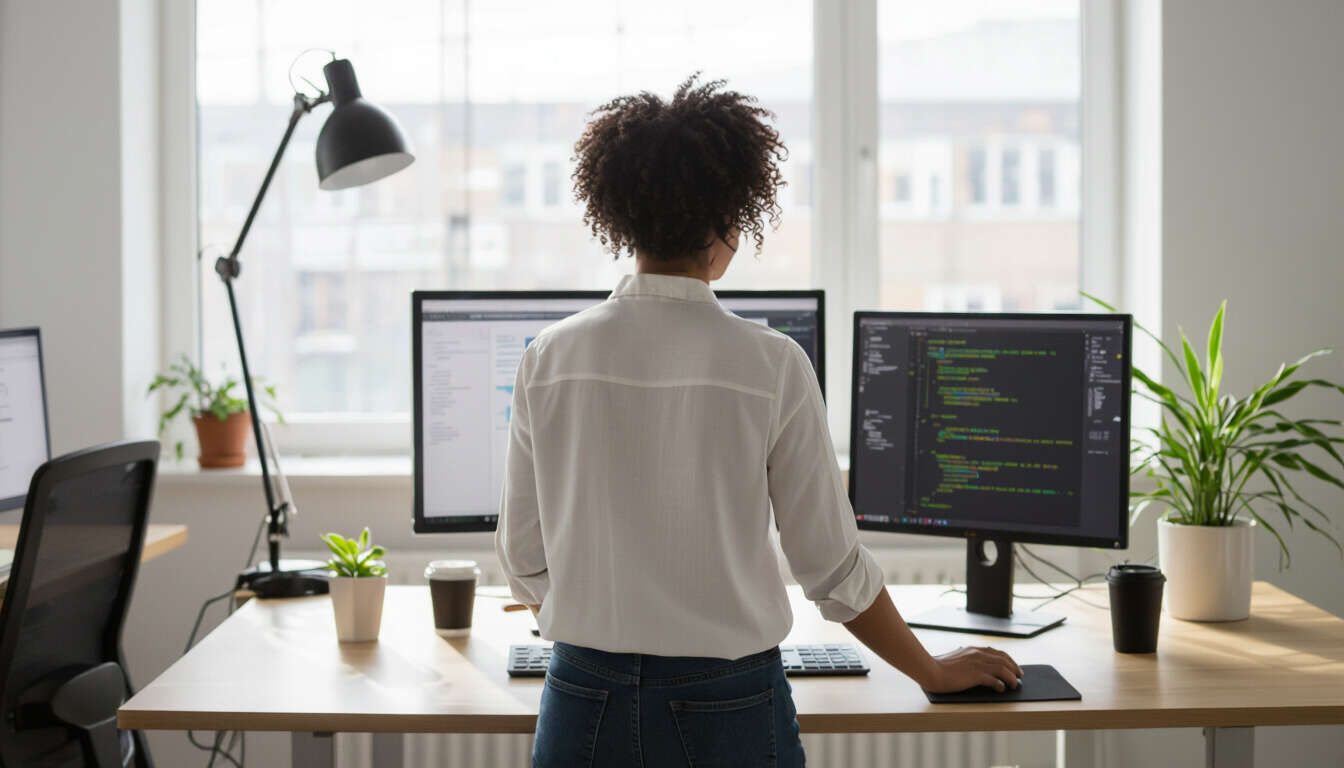Benefits of Standing Desks for Productivity
 by Verner Mayer
by Verner Mayer
Standing desks offer key advantages for health and focus, helping professionals and students stay active during work. Research shows they can reduce fatigue and improve efficiency, making them a practical choice for daily routines.

Standing desks have gained attention as a simple way to promote better work habits. They encourage users to alternate between sitting and standing, which can lead to noticeable improvements in daily routines.
One major advantage is the potential for better physical health. Studies indicate that prolonged sitting increases risks for issues like back pain and poor circulation. By using a standing desk, individuals may experience less strain on the body. For example, research from workplace health studies highlights how standing desks help maintain energy levels throughout the day.
In terms of focus, these desks support mental clarity. A review of productivity research suggests that regular movement can enhance concentration and reduce the midday slump. This means professionals might find it easier to tackle tasks without frequent breaks for stretching. The key is incorporating short periods of standing to keep the mind sharp.
To make the most of a standing desk, consider a few practical steps. First, start with shorter sessions and gradually increase time spent standing. This allows the body to adjust comfortably. Using an anti-fatigue mat can also provide support and make the experience more enjoyable. Additionally, pair the desk with other habits, such as taking regular walks, to boost overall efficiency.
Another benefit involves creativity and problem-solving. Evidence from cognitive studies shows that changing positions can stimulate brain activity. When people stand, they often feel more alert, leading to quicker decision-making. For students, this could translate to better study sessions and improved retention of information.
It's also worth noting how productivity hacks like standing desks fit into broader routines. By reducing sedentary time, users report higher satisfaction with their work environment. This positive shift can encourage a cycle of better habits, from healthier eating to more effective time management.
In practice, many find that standing desks integrate well with existing setups. Options range from adjustable models to simple platforms, making them accessible for various budgets. The goal is to create a workspace that supports both body and mind, fostering long-term success.
Ultimately, adopting a standing desk can be a straightforward change with lasting effects. By focusing on these benefits, individuals can build routines that enhance their performance and well-being.
